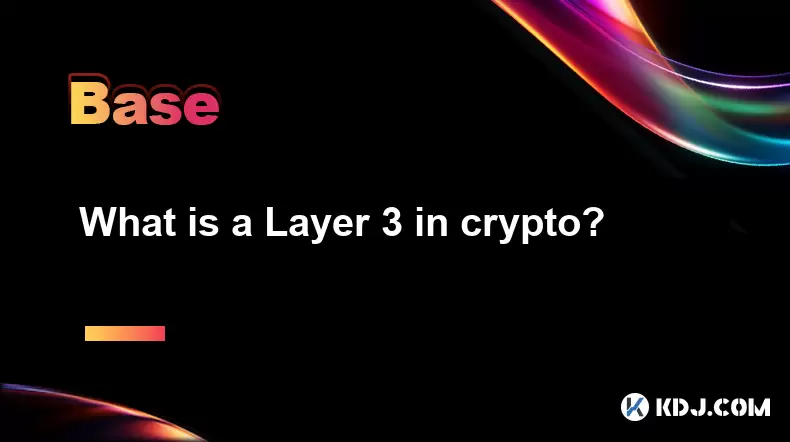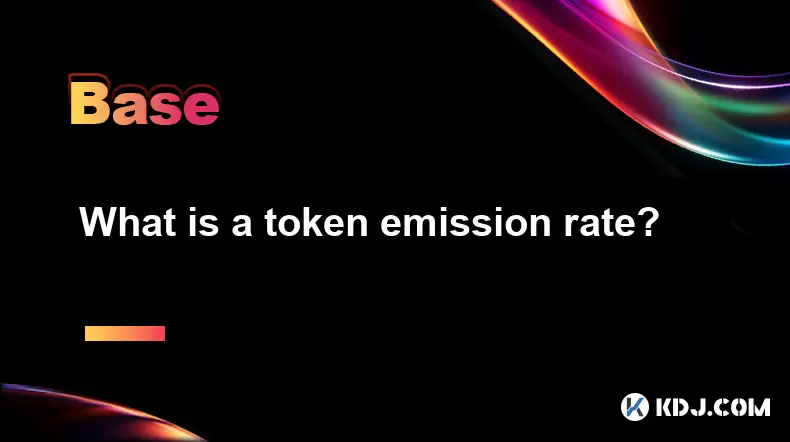-
 Bitcoin
Bitcoin $108,562.4295
0.46% -
 Ethereum
Ethereum $2,533.9553
1.52% -
 Tether USDt
Tether USDt $1.0002
-0.01% -
 XRP
XRP $2.2542
2.23% -
 BNB
BNB $662.4567
1.48% -
 Solana
Solana $151.4114
3.48% -
 USDC
USDC $0.9999
0.00% -
 TRON
TRON $0.2860
0.91% -
 Dogecoin
Dogecoin $0.1685
3.72% -
 Cardano
Cardano $0.5809
1.63% -
 Hyperliquid
Hyperliquid $39.2916
1.85% -
 Sui
Sui $2.8874
0.85% -
 Bitcoin Cash
Bitcoin Cash $496.5801
2.72% -
 Chainlink
Chainlink $13.3582
2.48% -
 UNUS SED LEO
UNUS SED LEO $9.0279
0.07% -
 Avalanche
Avalanche $18.0773
2.30% -
 Stellar
Stellar $0.2426
3.05% -
 Toncoin
Toncoin $2.9086
6.01% -
 Shiba Inu
Shiba Inu $0.0...01170
2.97% -
 Hedera
Hedera $0.1587
3.47% -
 Litecoin
Litecoin $87.4596
1.13% -
 Monero
Monero $317.0425
0.73% -
 Polkadot
Polkadot $3.3778
1.90% -
 Dai
Dai $0.9999
-0.01% -
 Ethena USDe
Ethena USDe $1.0001
-0.01% -
 Bitget Token
Bitget Token $4.4095
0.63% -
 Uniswap
Uniswap $7.3593
6.80% -
 Pepe
Pepe $0.0...09910
3.64% -
 Aave
Aave $274.7388
2.68% -
 Pi
Pi $0.4607
0.48%
What is a Layer 3 in crypto?
Layer 3 in blockchain enhances decentralized systems with specialized applications, cross-chain communication, and user-friendly interfaces, building on the scalability and security of Layers 1 and 2.
Jul 07, 2025 at 02:49 am

Understanding the Concept of Layer 3 in Blockchain
In the blockchain ecosystem, the term Layer 3 refers to a category of protocols or applications that sit atop Layer 2 solutions and provide enhanced functionality for decentralized systems. While Layer 1 constitutes the base blockchain (e.g., Bitcoin, Ethereum), and Layer 2 introduces scalability through sidechains and state channels, Layer 3 is primarily associated with application-specific enhancements, including user interfaces, off-chain computation, and advanced use cases like cross-chain interoperability.
Layer 3 protocols are not standardized across all blockchains. They vary significantly depending on the design goals of developers and the specific needs of end users. These layers often focus on improving user experience, enabling complex smart contract interactions, and facilitating communication between different blockchain networks.
How Layer 3 Differs from Layer 1 and Layer 2
To understand Layer 3 in crypto, it's essential to distinguish its role from lower-level blockchain layers:
- Layer 1 refers to the foundational blockchain protocol itself, such as Ethereum or Solana. It handles consensus mechanisms, data storage, and basic transaction validation.
- Layer 2 includes scaling solutions built on top of Layer 1, such as rollups, state channels, and sidechains. These aim to reduce congestion and increase transaction throughput without altering the core protocol.
- Layer 3 builds upon Layer 2 by introducing specialized functionalities, such as domain-specific applications, privacy tools, or interchain bridges.
This hierarchical structure allows for modular development, where each layer addresses a unique set of challenges within the blockchain stack.
Key Features of Layer 3 Protocols
Several features define what makes a protocol qualify as a Layer 3 solution:
- Application-Specific Logic: Layer 3 often provides tailored environments for dApps, such as gaming platforms, DeFi protocols, or NFT marketplaces.
- Cross-Chain Communication: Some Layer 3 projects focus on enabling seamless asset transfers and data exchange between disparate blockchains.
- Off-Chain Computation: By handling heavy computations outside the main chain, Layer 3 can improve efficiency while maintaining trustless execution.
- User-Facing Interfaces: Layer 3 often includes web and mobile interfaces that abstract the complexity of blockchain interactions for non-technical users.
These features allow developers to create more sophisticated decentralized applications while leveraging the security and scalability benefits of lower layers.
Examples of Layer 3 Projects in Crypto
Although Layer 3 is still an evolving concept, several notable projects operate at this level:
- StarkNet: A Layer 2 network that also incorporates Layer 3 capabilities by supporting application-specific subnets for enhanced scalability and customization.
- Loopring: Primarily a Layer 2 DEX protocol, Loopring also integrates Layer 3 features like zkRollup-based order books and user-centric interfaces.
- Arbitrum Orbit: Designed to enable custom Layer 3 chains that work seamlessly with Arbitrum’s Layer 2 infrastructure, offering greater flexibility for developers.
Each of these projects demonstrates how Layer 3 in crypto can extend beyond simple transactions to include logic-heavy operations and user-oriented services.
Technical Architecture Behind Layer 3 Solutions
The technical architecture of Layer 3 in crypto varies widely, but most implementations follow a similar conceptual framework:
- Execution Environments: Layer 3 typically runs on virtual machines or interpreters that execute code independently of the underlying Layer 1 or Layer 2. This enables developers to build custom logic without affecting the core blockchain.
- Data Availability Layers: To ensure transparency and security, Layer 3 relies on data availability solutions provided by Layer 2 or directly by Layer 1. This ensures that even if Layer 3 nodes go offline, data remains accessible.
- Interoperability Bridges: Many Layer 3 protocols integrate with cross-chain bridges to facilitate asset transfers and message passing between different ecosystems.
- Consensus Mechanisms: Unlike Layer 1, Layer 3 does not usually have its own consensus mechanism. Instead, it depends on the security guarantees of the underlying layers to validate transactions and maintain integrity.
This layered approach ensures that Layer 3 in crypto can be highly customizable while remaining secure and scalable.
Frequently Asked Questions About Layer 3 in Crypto
Can Layer 3 Replace Layer 1 or Layer 2?
No, Layer 3 cannot replace Layer 1 or Layer 2 because each layer serves a distinct purpose. Layer 1 provides the foundation for decentralization and security, while Layer 2 enhances scalability. Layer 3 adds functionality and specialization but depends on the lower layers for data integrity and finality.
Is Every dApp Considered a Layer 3?
Not necessarily. While many dApps operate at Layer 3, especially those with complex logic or cross-chain capabilities, some dApps run directly on Layer 1 or Layer 2 without additional abstraction layers. The distinction depends on whether the application introduces domain-specific enhancements or operates entirely within the constraints of the lower layers.
Do All Blockchains Support Layer 3?
Currently, only select blockchains support explicit Layer 3 implementations. For example, StarkWare and Arbitrum offer frameworks for building Layer 3 solutions, while others may not yet have the infrastructure to accommodate them. As blockchain technology evolves, broader adoption of Layer 3 is expected.
How Does Layer 3 Improve User Experience?
By abstracting complex blockchain interactions, Layer 3 improves user experience through intuitive interfaces, faster transaction confirmations, and seamless integration with other platforms. It allows developers to create user-friendly applications that hide the technical intricacies of decentralized systems.
Disclaimer:info@kdj.com
The information provided is not trading advice. kdj.com does not assume any responsibility for any investments made based on the information provided in this article. Cryptocurrencies are highly volatile and it is highly recommended that you invest with caution after thorough research!
If you believe that the content used on this website infringes your copyright, please contact us immediately (info@kdj.com) and we will delete it promptly.
- Elon Musk, Andrew Yang, and Polymarket: What's the Buzz?
- 2025-07-07 10:30:12
- Lightchain AI's Bonus Round: The Final Chance Before Mainnet & Ecosystem Tools
- 2025-07-07 10:30:12
- TON Foundation, UAE Golden Visa, and Toncoin Staking: A New Chapter in Crypto Residency?
- 2025-07-07 10:50:12
- Altcoin Prices, Institutional Investors, and the Ethereum Rotation: What's the Deal?
- 2025-07-07 10:50:12
- TON Coin, Golden Visa, and UAE Denial: What's the Real Deal?
- 2025-07-07 10:55:12
- PEPE's Bullish Trend: Riding the 50% Gain Wave?
- 2025-07-07 10:55:12
Related knowledge

What is a user-generated content (UGC) NFT platform?
Jul 04,2025 at 01:49pm
Understanding the Concept of a UGC NFT PlatformA user-generated content (UGC) NFT platform is a digital marketplace or ecosystem where users can create, mint, and trade non-fungible tokens (NFTs) that represent ownership of original digital content they produce. Unlike traditional NFT platforms where creators often include professional artists or develo...

What is composability in DeFi?
Jul 06,2025 at 04:07pm
Understanding the Concept of Composability in DeFiComposability in DeFi refers to the ability of decentralized finance protocols and smart contracts to interact seamlessly with one another, much like building blocks that can be combined in various ways to create new financial products and services. This concept is a core innovation within the DeFi ecosy...

What is a "crypto primitive"?
Jul 05,2025 at 10:14pm
Defining the Concept of a Crypto PrimitiveIn the context of blockchain and cryptocurrency, a crypto primitive refers to a fundamental building block or foundational element used in constructing decentralized systems and cryptographic protocols. These primitives are essential for enabling secure transactions, consensus mechanisms, and smart contract exec...

What is a fair launch?
Jul 05,2025 at 07:31pm
Understanding the Concept of a Fair LaunchA fair launch refers to the release of a cryptocurrency or blockchain project in a manner that ensures equal opportunity for all participants. Unlike traditional token launches, which may involve private sales, venture capital funding, or pre-mining, a fair launch emphasizes transparency and decentralization. In...

What is a token emission rate?
Jul 07,2025 at 02:51am
Understanding the Basics of Token Emission RateIn the realm of cryptocurrencies, token emission rate refers to the speed or frequency at which new tokens are generated and released into circulation within a blockchain network. This concept is fundamental in understanding how certain blockchain ecosystems manage inflation, incentivize participants, and m...

What is a cliff in tokenomics?
Jul 05,2025 at 07:18pm
Understanding the Concept of a Cliff in TokenomicsIn the world of cryptocurrency and blockchain, tokenomics plays a pivotal role in shaping the economic behavior of a digital asset. One of the key mechanisms used to manage token distribution is known as a cliff. This concept is commonly applied in projects that include vesting schedules for tokens, espe...

What is a user-generated content (UGC) NFT platform?
Jul 04,2025 at 01:49pm
Understanding the Concept of a UGC NFT PlatformA user-generated content (UGC) NFT platform is a digital marketplace or ecosystem where users can create, mint, and trade non-fungible tokens (NFTs) that represent ownership of original digital content they produce. Unlike traditional NFT platforms where creators often include professional artists or develo...

What is composability in DeFi?
Jul 06,2025 at 04:07pm
Understanding the Concept of Composability in DeFiComposability in DeFi refers to the ability of decentralized finance protocols and smart contracts to interact seamlessly with one another, much like building blocks that can be combined in various ways to create new financial products and services. This concept is a core innovation within the DeFi ecosy...

What is a "crypto primitive"?
Jul 05,2025 at 10:14pm
Defining the Concept of a Crypto PrimitiveIn the context of blockchain and cryptocurrency, a crypto primitive refers to a fundamental building block or foundational element used in constructing decentralized systems and cryptographic protocols. These primitives are essential for enabling secure transactions, consensus mechanisms, and smart contract exec...

What is a fair launch?
Jul 05,2025 at 07:31pm
Understanding the Concept of a Fair LaunchA fair launch refers to the release of a cryptocurrency or blockchain project in a manner that ensures equal opportunity for all participants. Unlike traditional token launches, which may involve private sales, venture capital funding, or pre-mining, a fair launch emphasizes transparency and decentralization. In...

What is a token emission rate?
Jul 07,2025 at 02:51am
Understanding the Basics of Token Emission RateIn the realm of cryptocurrencies, token emission rate refers to the speed or frequency at which new tokens are generated and released into circulation within a blockchain network. This concept is fundamental in understanding how certain blockchain ecosystems manage inflation, incentivize participants, and m...

What is a cliff in tokenomics?
Jul 05,2025 at 07:18pm
Understanding the Concept of a Cliff in TokenomicsIn the world of cryptocurrency and blockchain, tokenomics plays a pivotal role in shaping the economic behavior of a digital asset. One of the key mechanisms used to manage token distribution is known as a cliff. This concept is commonly applied in projects that include vesting schedules for tokens, espe...
See all articles

























































































